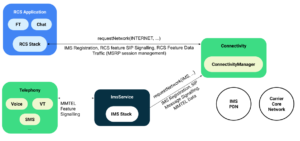Web design, a pivotal element in today’s digital landscape, is more than just assembling pixels; it’s an art form that combines aesthetics with functionality. This article takes you through the journey of mastering web design, from its basics to the intricate process of creation, emphasizing its impact on user experience and the importance of effective planning.
The Basics of Web Design
The journey begins with understanding the foundations of web design. This encompasses a range of elements, from the use of colors and typography to the structure and layout of content. The goal here is to create a visually appealing yet highly functional website. Unlike graphic design, which often focuses on static visuals, web design is about creating dynamic, interactive experiences. This difference is crucial when comparing web design and graphic design – each has its unique challenges and objectives.
User Experience (UX) and User Interface (UI)
Central to web design are UX and UI. UX is the overarching discipline focusing on the overall feel of the website, ensuring it’s intuitive, user-friendly, and meets the needs of the audience. Meanwhile, UI delves into the specific aspects of the website’s design, like buttons, icons, and sliders. A well-executed UX/UI design not only makes a website visually attractive but also easy to navigate, significantly enhancing the user’s journey through the site.
The Web Design Process
1. Planning: Every successful website starts with thorough planning. This involves understanding the website’s goals, the target audience, and the desired outcomes.
2. Wireframing and Prototyping: Next comes wireframing and prototyping. Here, ideas take a more concrete shape. Wireframes sketch out the basic layout, while prototypes offer an initial look at the website’s functionality. This stage is crucial for visualizing how various elements will work together in the final design.
3. Visual Design: This stage is where the creative magic happens. Designers choose colors, fonts, and images that align with the brand’s identity. It’s a balancing act between aesthetic appeal and functional design, ensuring that the website is not only beautiful but also practical and accessible. I came across an insightful article recently, highlighting various B2B websites. You can check how these examples offer valuable lessons in effective design strategies and user engagement tactics.
4. Development and Coding: The development phase brings the visual design to life. Here, coding skills come into play to build a functional, responsive website. This stage is about translating design into a working model, integrating various technologies and platforms as needed.
5. Testing and Optimization: Finally, testing and optimization are vital to ensure the website operates smoothly. This involves ironing out any bugs, improving load times, and ensuring compatibility across different devices and browsers. Regular updates and optimizations keep the website relevant and effective.
Tools and Resources for Web Design
Today’s web designers have an array of tools at their disposal. From graphic design software like Adobe Photoshop to web development platforms such as WordPress, these tools facilitate the creation of dynamic, responsive websites. Resources like online tutorials, forums, and communities provide invaluable support and learning opportunities for both novice and experienced designers.
Conclusion
Mastering web design is a journey of continuous learning and adaptation. It requires a deep understanding of both the technical aspects of building a website and the artistic flair needed to make it visually appealing. In this digital era, where websites are often the first point of contact between a business and its audience, excellence in web design is not just desirable; it’s essential. Whether you’re creating a B2B platform or a consumer-focused site, the principles of good web design remain the same: create a seamless, engaging, and effective user experience that transforms simple pixels into perfection.





More Stories
How to Effectively Remove ChocoEukor from Your Android Device
How to Stop TinyTask: 10 Effective Techniques for Gamers and Tech Enthusiasts
dji pocket 3 vs. Competitors: Which Gaming Console Reigns Supreme.